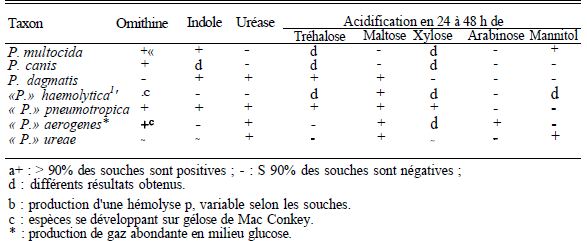

#Pasteurellose caprine professional#
He is a member of national and international professional societies and serves on the editorial board of some scientific journals, as well as being an invited reviewer for many journals from related fields. Khalafalla is an expert on infections affecting dromedary camels and serves as a consultant on camelid diseases for the World Animal Health Organization (OIE). He published over 90 research articles, reviews and book chapters. He served as the president of the International Society for Camelid Research and Development (ISOCARD) from 2012 to 2015. He worked as Head of the Camel Research and Development Program at the Arab Centre for the Studies of the Arid Zones and Dry lands (ACSAD) during 20 and Head of the Microbiology Department, Faculty of Veterinary Medicine, University of Khartoum in 2004 and the Director of the Camel Research Center in 2007. He is actively involved in laboratory diagnosis of virus infections in farm animals in UAE. He is currently Microbiology Specialist at the Division of Veterinary Laboratories, Abu Dhabi Food Control Authority, UAE. 15, 10 april 1998 relev pidmiologique hebdomadaire, n o 15, 10 avril 19, 73, 105-112 no.

Khalafalla obtained his PhD from the University of Khartoum, Sudan in 1997, and received post-doctoral training at the Federal Research Center for Virus Diseases of Animals in Tuebingen, Germany, April 2001 - January 2003. This book offers a valuable source of information for veterinary clinicians, researchers, graduate students, veterinary technicians and interested laymen.

Along these lines, the book covers topics related to zoonotic infections associated with camels. In recent years dromedary camels have become a focus of increasing public health interest since they have been considered the direct source of zoonotic transmission of MERS-CoV to humans. With an ongoing worldwide prevalence increase, infectious diseases are a constant threat to animal and human health. Principales pathologies des chevrettes identifiées par l’OMACAP Pourcentage des bilans sanitaires où l’affection est jugée dominantepar un vétérinaire spécialisé caprin en Poitou-Charentes (260 bilans) Etat des lieux sanitaire régional 3 1. Pathogen etiology, clinical manifestations and diagnostic techniques are provided for each pathogen and disease prevention and treatment strategies are discussed.ĭespite a steady increase in camel husbandry worldwide, the pathologies of camel diseases are still relatively under investigated in comparison to other livestock and companion animals. However, for the rare diseases, other methods of specific active surveillance (such as for example sentinel herds) remain important to complete passive surveillance.This book serves as a comprehensive yet concise reference guide reviewing the latest knowledge on bacterial, viral, fungal and parasitic infectious diseases of old world dromedary camels. Passive surveillance stimulated by awareness-raising meetings appears to be better adapted to Chads conditions and less expensive for the surveillance of existing diseases. Finally approximately 83% of the herd visits realised by the active surveillance stations showed negative results (no suspicion identified). Nevertheless, a considerable number of suspicions is recorded during awareness-raising meetings. However, suspicions recorded following farmer calls are significantly more important than suspicions carried out during herd visits or meetings. The results showed that, irrespective of surveillance type, all diseases under surveillance, except the rare diseases (Rinderpest and Rift Valley Fever) were reported by the surveillance agents. The suspicions recorded by the stations were consigned to a suspicion form specific to each disease, indicating whether a call from the farmer, a visit to the herd or a awareness-raising meeting was the source. The passive surveillance stations held each month four farmer awareness-raising meetings. The active surveillance stations carried out four herd visits monthly to look for the diseases under surveillance and organised four farmers awareness-raising meetings to stimulate them to make disease notifications. Nine diseases of various vaccination and expected prevalence status were monitored. It included 106 surveillance stations of the animal disease epidemiological surveillance network in Chad distributed randomly into 52 stations of active surveillance and 54 stations of passive surveillance.

A comparative study between passive and active surveillance based on herd visits (villages) was conducted over a period of 24 months.


 0 kommentar(er)
0 kommentar(er)
